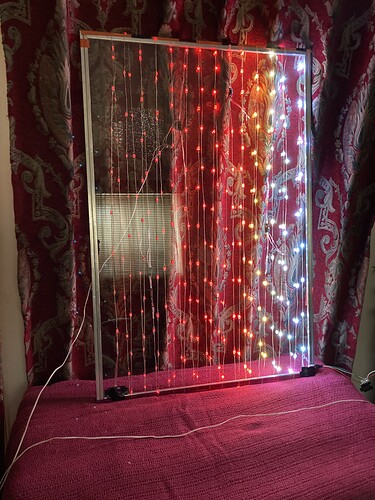We’ve been using Fairy Lights for some time now, now in addressable form, these from BTF -
With a more than ample power supply ( 5V, 30 A) there is considerable voltage drop with even one 50 px string. I’m measuring 1.3 volts drop at the first string.
The result of no additional power injection to a 250 px series string is as expected -
The (magnet) wire on these string is attractive from an aesthetic standpoint as it nearly disappears from view, ( its insulated diameter is 0.013 in) the downsides being fragility and, apparently, voltage drop.
Having to inject power every other string pretty much defeats the aesthetic purpose of “disappearing wires” and makes wiring up larger arrays cumbersome and unattractive with junctions in the field…
So, I guess the question is, granted other discussions about LEDs here, are there any good alternatives that any of you-all can think of that would satisfy the requirements:
Low wire visibility, large beam angle, high brightness and color accuracy (of course). Longer strings of 100 to 200 px, not needing power injection mid-string would be great. 12 volt would be fine . Maybe even 24 volt.
I recall talking with the creators of Radialumia at TTID one year, and they wired up mains with 24 volts, as I recall -
BTW this is a pretty interesting watch -
https://www.youtube.com/watch?app=desktop&v=eDv7TrDJNKg
And that is a way-ambitious project. A beautiful install nonetheless.
Sure appreciate any input you may have.
Have a well-lit day. Cheers.
